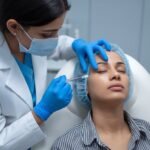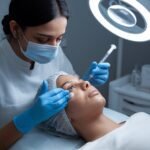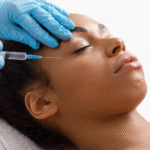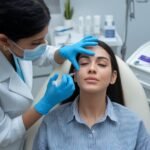What Is Botox Used For? Benefits of Botox Injections for Your Face and Skin?
- Home
- Anti-Aging
- What Botox Is Used For?
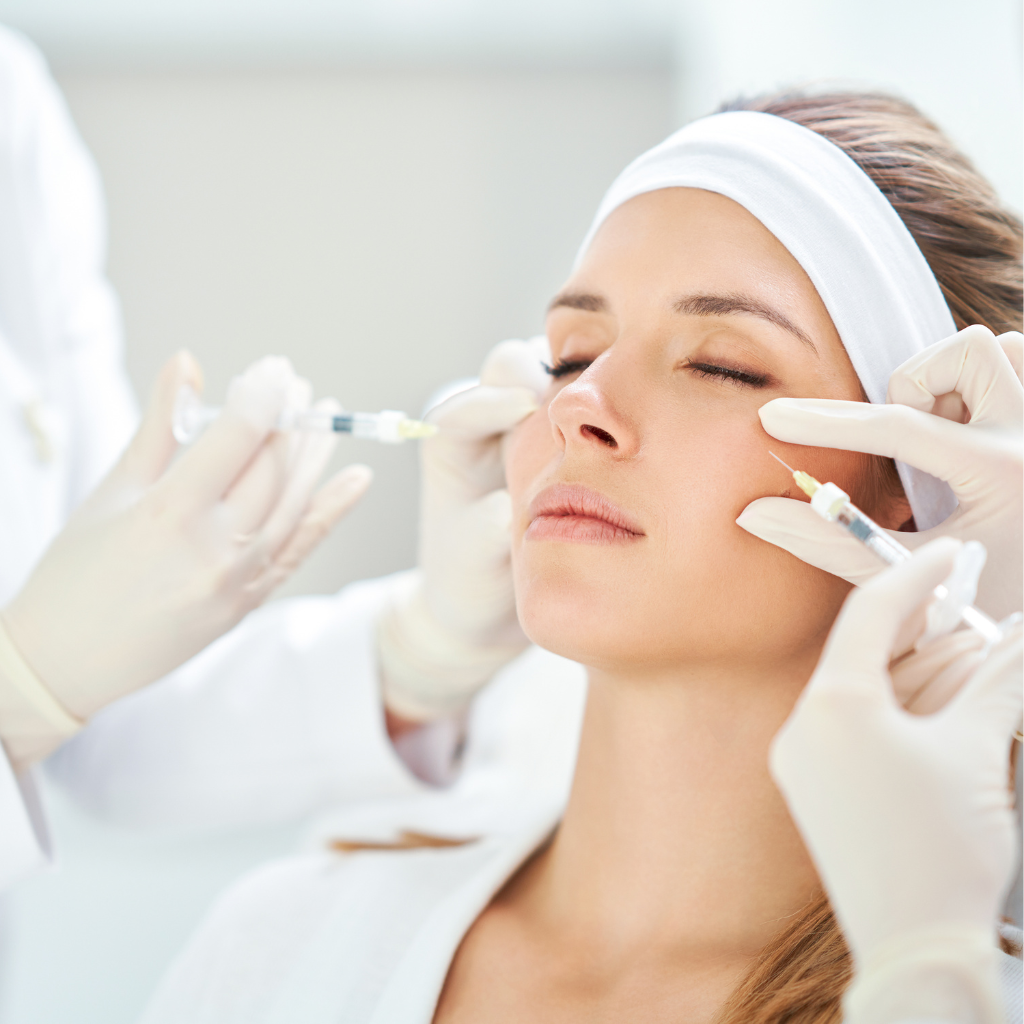
If you’ve ever wondered how celebrities maintain their ageless appearances, you might be intrigued to learn about the role of Botox. This popular treatment isn’t just for high‑profile personalities; it’s accessible and widely used by many looking to achieve a reduction of facial wrinkles, smooth out wrinkles, slim the jawline, or even treat medical conditions like chronic migraines and hyperhidrosis. By blocking nerve signals to muscles, botulinum toxin injections soften expression lines and can even slim thick jaw muscles (masseter Botox) or correct a gummy smile. However, understanding how Botox achieves these effects—and whether you need Botox or fillers—is key before deciding. Let’s explore the nuances so you can make an informed choice.
How Does Botox Work?
Botox is a purified protein made from Clostridium botulinum. When injected in tiny, diluted amounts, it relaxes the underlying muscles, letting the skin above appear smoother. This reduction in muscle activity diminishes dynamic wrinkles—those caused by facial expressions—and can last three to six months.
What Is Botox and How Does It Function?
The active component in Botox is botulinum toxin type A, one of several serotypes used medically and cosmetically. During a Botox procedure, a trained injector precisely targets small facial muscles responsible for frown lines, crow’s feet and other expression lines. Because it’s a brand name, other botulinum‑toxin products—such as Dysport, Xeomin, Jeuveau or Daxxify—may be used similarly but can differ slightly in diffusion and onset time. Precision is critical to avoid side effects like drooping eyelids or a “frozen” look.
The treatment is quick, typically lasting only a few minutes. Results appear within a few days and reach full effect in seven to fourteen days, lasting about three to six months. Follow‑up injections are needed to maintain a smooth appearance.
Understanding the Mechanism of Botox
Botulinum toxin works by stopping nerves from signalling muscles to contract, which smooths out wrinkles. It’s especially useful for forehead lines, frown lines between the eyebrows, and crow’s feet around the eyes. Strategic placement ensures only targeted muscles relax, preserving natural facial expression. Botox’s muscle‑relaxant mechanism is also used in medical applications, relieving chronic migraines, neck spasms, overactive bladder, and excessive sweating (hyperhidrosis).
Below is a summary of how botulinum toxin injections work:
Step in Process | Description |
Injection | A fine needle delivers tiny amounts of Botox into specific muscles. |
Neurotransmitter Blockage | Botulinum toxin prevents acetylcholine release, stopping nerve signals. |
Muscle Relaxation | Target muscles can’t contract, so wrinkles soften. |
Smoothing Effect | Areas like the forehead, glabella and crow’s feet become less creased. |
Duration of Effects | Effects last roughly three to six months before wearing off. |
Understanding these steps helps you grasp the full scope of what to expect when considering or undergoing a Botox procedure.
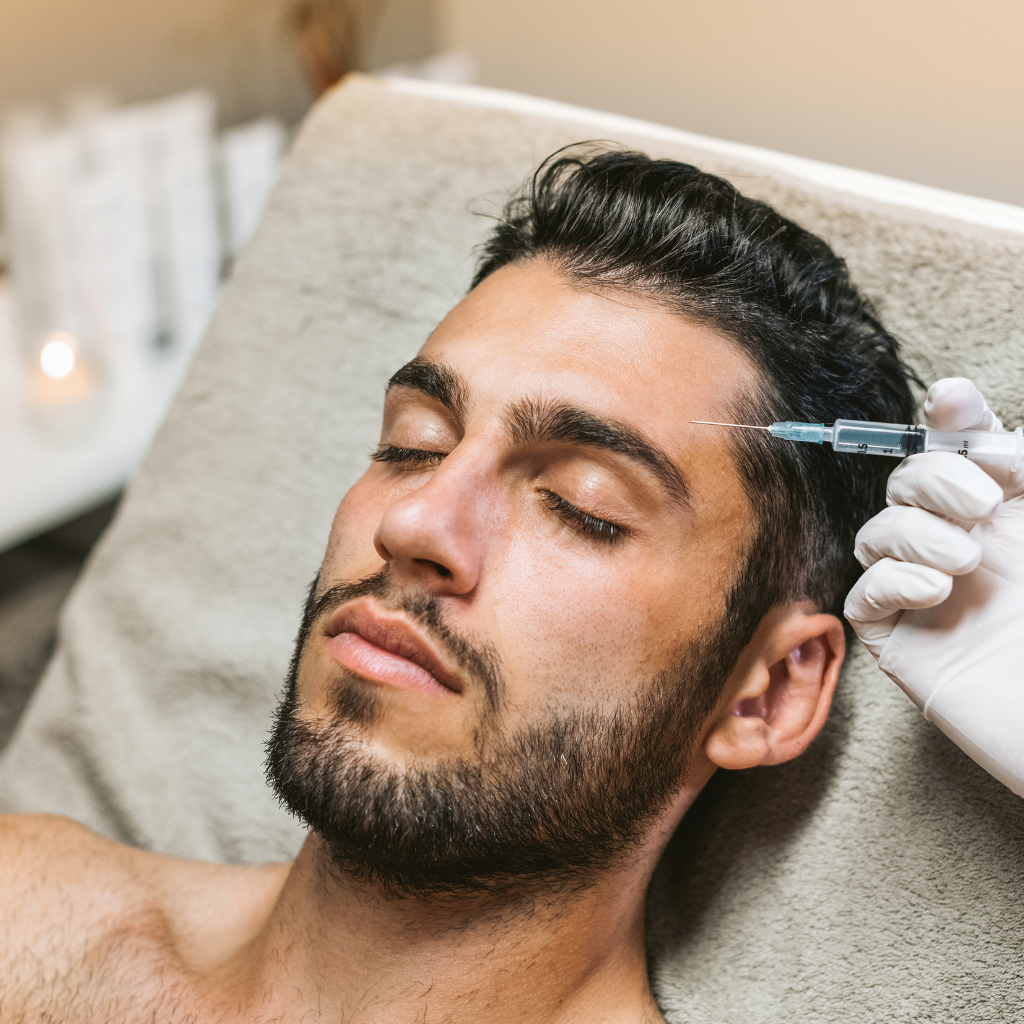
How Botox Injections Affect Muscles
Botox specifically targets small facial muscles to treat various wrinkles:
- Frown lines (glabellar lines): Relaxing the corrugator and procerus muscles smooths the “11s” between the eyebrows.
- Crow’s feet: Injecting into the orbicularis oculi softens lines that fan out from the outer corners of the eyes.
- Forehead lines: Treatment of the frontalis muscle reduces horizontal forehead creases.
Botox’s benefits extend beyond wrinkle reduction; masseter Botox can slim a square jaw by relaxing overactive jaw muscles, while a lip flip uses small doses to roll the upper lip slightly outward, giving the illusion of fuller lips. Because Botox relaxes muscles, it may also be used to lift the brows (a non‑surgical brow lift), soften bands in the neck or prevent gums from showing when you smile (gummy smile correction). By limiting muscle movement, Botox not only diminishes existing lines but can also slow the formation of new wrinkles.
What Botox Is Used for Cosmetic Purposes?
Beyond general wrinkle smoothing, Botox injection treatments is used for a range of cosmetic enhancements. It’s one of the most popular non‑surgical treatments for forehead lines, glabellar lines and crow’s feet. Botox can also perform a “lip flip,” enhance a non‑surgical brow lift and minimize bunny lines (nasal wrinkles), , and offer the lasting impact of hair Botox for hair rejuvenation. Its versatility makes it suitable for men and women seeking subtle yet impactful facial rejuvenation.
Common Cosmetic Treatments with Botox
Botox injections are mainly used to smooth facial wrinkles, such as crow’s feet, forehead lines, and frown lines between the eyebrows. When you opt for Botox, you’re addressing dynamic wrinkles—creases caused by smiling, frowning or squinting. Here are some common injection sites:
- Eyes: Treating crow’s feet and subtly lifting the outer eyebrow to open up the eye area.
- Forehead: Smoothing horizontal lines caused by raising your brows.
- Glabella: Relaxing muscles between the eyebrows to soften frown lines.
- Around the mouth: Soften smile lines or lift downturned mouth corners.
- Lips: A lip flip injects small amounts along the vermilion border to roll the lip outward slightly.
- Masseter muscle: Slims the face by relaxing jaw muscles; effective for jaw clenching or teeth grinding.
These treatments can help you look more relaxed and refreshed without surgery. Remember that results are temporary and typically require maintenance every three to six months.
Botox Treatment for Forehead Lines and Crow’s Feet
Forehead lines and crow’s feet respond exceptionally well to Botox. Precise injections relax the frontalis and orbicularis oculi muscles, smoothing lines while preserving your ability to express yourself. Improvements can be seen within a few days and over several months. To keep lines at bay, plan for periodic treatments.
While Botox has a strong safety record, minor side effects like bruising, swelling or mild headaches can occur. These generally resolve quickly. Choosing an experienced injector minimizes the risk of complications, such as migrating Botox (which can cause drooping eyelids or a lopsided smile). If you notice uneven results, contact your provider; migration often improves as the product wears off.
Exploring Botox Cosmetic Procedures for the Face
Besides the eyes and forehead, Botox can refine several other facial areas. Some additional uses include:
- Brow lift: Targeting the depressor muscles (corrugator, procerus) gently lifts the eyebrows and reduces brow heaviness.
- Mouth and chin: Treating the depressor anguli oris can lift downturned mouth corners, while small injections in the chin smooth dimpling or a “cobblestone” appearance.
- Nose (bunny lines): Botox softens wrinkles on the sides of your nose when you scrunch up your face.
- Neck bands: Injections into the platysma bands can reduce vertical neck lines for a smoother profile.
Always discuss your goals and any previous injections with a qualified practitioner. Proper placement and dosing are essential to achieving natural results.
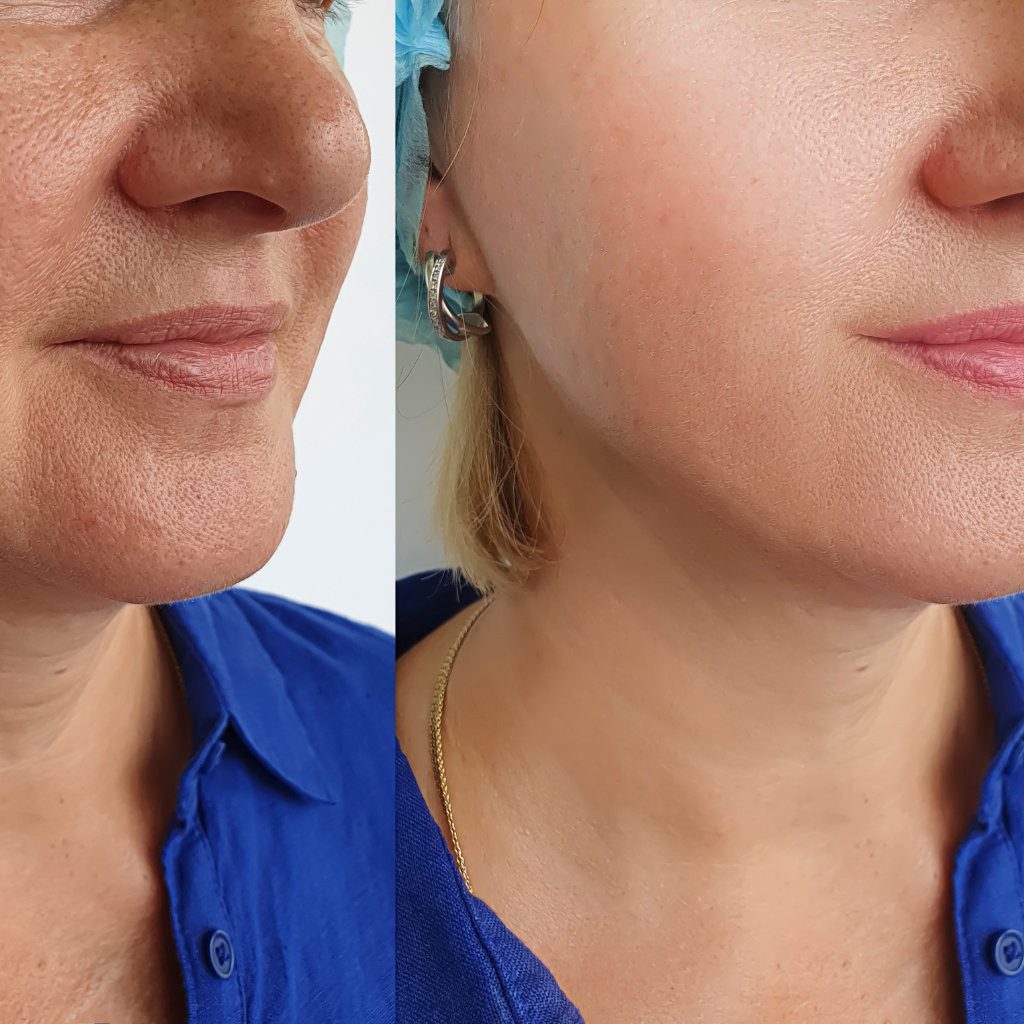
How Much Does a Botox Procedure Cost?
Several factors influence the price of Botox. Geography plays a role—clinics in urban or high‑cost areas may charge more. Provider expertise also matters; board‑certified dermatologists and plastic surgeons often charge higher rates due to their skill and experience. Botox is priced per unit, and the total units needed depend on the treatment area and desired effect. Larger or multiple areas (e.g., forehead, glabella, crow’s feet and masseter) will cost more.
Factors Affecting the Cost of Botox Injections
Key considerations include:
- Complexity of the area: Areas like the masseter or around the mouth require more expertise and units.
- Frequency of treatments: Some providers offer packages or loyalty discounts for regular clients.
- Combination treatments: Pairing Botox with fillers or chemical peels may influence overall cost.
If you need Botox for medical conditions such as chronic migraines or hyperhidrosis, insurance may cover some costs. Speak to your provider about coverage options and consider a consultation to receive a personalized quote.
How to Know If You Need Botox or Filler
The decision between Botox and fillers depends on the type of lines you want to treat. Botox works best on wrinkles that appear when you move your muscles—like forehead lines, crow’s feet around the eyes, and frown lines between the eyebrows. Dermal fillers, such as hyaluronic acid, plump areas of volume loss or deeper static wrinkles (nasolabial folds, marionette lines, cheeks and lips). If you’re unsure, a consultation can assess whether you need Botox, fillers or a combination of both. An experienced injector will evaluate your skin, facial anatomy and goals.
It’s also important to understand when masseter Botox will work—this treatment slims a square jaw caused by enlarged masseter muscles. You may be a good candidate if you grind or clench your teeth or desire a softer jawline. Results usually appear within a few weeks and can last for up to six months.
How to Know If Your Botox Has Migrated or Been Diluted
Unwanted spreading of Botox (migration) is rare but can occur if injections are too deep or if you rub the area shortly after treatment. Signs include drooping eyelids, a crooked smile or uneven facial expression. If you suspect migration, contact your practitioner. Diluted Botox may produce less noticeable results or wear off faster. Choosing a reputable provider and avoiding strenuous activity or lying down for three to four hours after injections reduces these risks.
Where to Inject Botox for the Best Results
Common injection sites vary depending on your goals. For forehead wrinkles, injections are placed across the frontalis muscle; for glabellar lines, between the brows. A brow lift targets the corrugator and orbicularis oculi muscles. Crow’s feet and lines around the eyes are treated at the outer eye corners. For a lip flip or lip lines, tiny amounts are injected along the upper lip vermilion. Under‑eye Botox should be administered conservatively by experienced injectors. Other areas include the chin (dimpling), jawline (masseter muscle) and neck bands (platysma). Discuss injection sites with your provider to ensure safe, effective placement.
Conclusion
Botox is a versatile, minimally invasive treatment that can smooth wrinkles, refine facial contours and treat medical conditions ranging from chronic migraine and hyperhidrosis to overactive bladder. It works by temporarily relaxing specific muscles, with results lasting several months. Deciding between Botox and fillers—and determining where to inject botulinum toxin—depends on whether you’re targeting dynamic or static wrinkles, seeking a lip flip or jaw slimming, or considering medical treatments. Always see an experienced, qualified practitioner, share any previous injections or medications, and follow aftercare instructions to reduce side effects and get the best results. With proper use, Botox provides a safe and effective method to enhance appearance and confidence.

Highly skilled cosmetologist at Tune Clinical Aesthetics, specializing in advanced skin and hair treatments.


